19 February
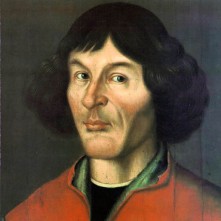
Nicholas Copernicus
1473 – Birth of Nicholas Copernicus, the Renaissance mathematician and astronomer, in Thorn, in the province of Royal Prussia, Poland. Copernicus is known for his theory of heliocentric cosmology, or the idea that the sun was stationary in the centre of the universe and that the earth revolved around it.
1547 - King Edward VI rode from the Tower of London to Westminster in preparation for his coronation the next day. Click here to read more.
1546 – William Cavendish was appointed Treasurer of the Privy Chamber. He later claimed that he had paid £1000 for the position.
1567 – The imprisoned Margaret Douglas, Countess of Lennox, was informed of the murder of her son, Henry Stewart, Lord Darnley, by William Cecil’s wife, Mildred, and Lady William Howard. The Spanish ambassador recorded that Margaret's grief was such “that it was necessary for the Queen to send her doctors to her”.
1592 - The Rose Theatre, an Elizabethan playhouse, was opened in London on Bankside.
1598 – Death of Jasper Heywood, Jesuit and poet, in Naples. Heywood had been deported to France in January 1585, after being imprisoned in the Tower of London for treason, and was then summoned to Rome. He never returned to England.
1601 – Death of Thomas Fanshawe, at Warwick Lane. He was buried in the south aisle of Ware church in Hertfordshire. Fanshawe was an Exchequer official during Elizabeth I's reign.
20 February
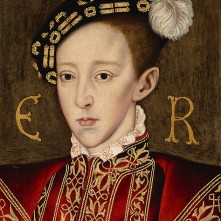
Edward VI
1516 – Baptism of Princess Mary, the future Mary I, in the Church of the Observant Friars at Greenwich. The princess was carried to the font by the Countess of Surrey, and her godparents were Catherine Courtenay, Countess of Devon and daughter of Edward IV; Margaret Pole, Countess of Salisbury and daughter of George, Duke of Clarence; the Duchess of Norfolk and Cardinal Thomas Wolsey. Click here to read more.
1523 – Hanging of Agnes Hungerford, Lady Hungerford, at Tyburn. Agnes was hanged, with her servant William Mathewe, after they were found guilty of murdering Agnes's first husband, John Cotell. It was said that Agnes arranged for her servants, William Mathewe and William Ignes, to strangle Cotell in 1518. Mathewe and Ignes were found guilty of murder ‘by the procurement and abetting of Agnes Hungerford’, and Agnes was found guilty of inciting and abetting the murder. Ignes was hanged at a later date. Agnes was buried at Grey Friars, London.
1547 - Edward VI was crowned King at Westminster Abbey by Archbishop Thomas Cranmer. Edward VI was the first monarch to be anointed as Supreme Head of the English Church. Click here to read more about his coronation.
1552 – Death of Anne Herbert, sister of Catherine Parr and wife of William Herbert, 1st Earl of Pembroke. Anne died at Baynard’s Castle and was buried in St Paul’s. Anne was a maid of honour to Jane Seymour, keeper of the jewels to Catherine Howard and was serving the Lady Mary (future Mary I) at the time of her death.
1579 – Death of Sir Nicholas Bacon, lawyer, administrator, Lord Keeper of the Great Seal and father of Sir Francis Bacon at Old Gorhambury House, the house he had built in Hertfordshire. He lay in state for nearly two weeks at York Place before being buried in St Paul's Cathedral.
21 February

Ambrose Dudley's tomb
1498 – Birth of Ralph Neville, 4th Earl of Westmorland. He was the second son of Ralph, Baron Neville, and his wife, Edith, daughter of Sir William Sandys of the Vyne. Westmorland served Henry VIII in the North, and was a member of the jury at the trials of George and Anne Boleyn in 1536.
1513 – Death of Pope Julius II from a fever. He was buried in St Peter's in the Vatican.
1549 – Death of Sir Richard Gresham, Mayor of London, mercer and merchant adventurer, at Bethnal Green. He was buried in the church of St Lawrence Jewry in London.
1568 – Burial of Katherine Seymour (née Grey), Countess of Hertford, at Yoxford. Her remains were later re-interred, by her grandson, in the Seymour family tomb at Salisbury Cathedral. Click here to listen to Conor Byrne's talk on the Grey sisters.
1579 – Death of Thomas Bentham, Bishop of Coventry and Lichfield, at Eccleshall, Staffordshire. He was buried in the chapel of the Episcopal Palace at Eccleshall.
1589 – Death of William Somerset, 3rd Earl of Worcester, in Clerkenwell, Middlesex. He was buried in Raglan parish church.
1590 - Ambrose Dudley, 3rd Earl of Warwick, Master of the Ordnance, Privy Councillor and fourth son of John Dudley, Duke of Northumberland, died at Bedford House on the Strand. He was laid to rest in the Beauchamp Chapel of the Collegiate Church of St Mary, Warwick.
1595 – The execution of Robert Southwell, Jesuit priest and writer, at Tyburn. He was hanged, drawn and quartered. Southwell was canonized in 1970.
22 February
1511 - Death of Henry, Duke of Cornwall, the fifty-two day-old son of Henry VIII and Catherine of Aragon.
1540 – Marie de Guise, consort of James V of Scotland and mother of Mary, Queen of Scots, was crowned in Holyrood Abbey.
1571 – Death of John Bury, translator. He had never recovered from a fall from his horse in August 1570, which had resulted in him breaking a leg. He is known for his “The Godly Advertisement or Good Counsell of the Famous Orator Isocrates”, an English translation of Isocrates' Greek speech Ad demonicum.
23 February
1503 – Burial of Elizabeth of York, Queen Consort of Henry VII and mother of Henry VIII, at Westminster Abbey.
1512 – Birth of William Framyngham, scholar and author, at Norwich, Norfolk. Unfortunately, his works are lost, but his friend, Dr John Caius listed seven of his works, which included heroic verse, a poem in pentameters and hexameters, a poem on idolatry and two books of prose.
1525 – Start of the Battle of Pavia during the Italian Wars of 1521-1526. The imperial troops of Charles V defeated those of Francis I and Francis I was captured, imprisoned and forced into signing the Treaty of Madrid.
1533 – Death of James Denton, Archdeacon of Cleveland and Dean of Lichfield, at Ludlow. He was buried in St Lawrence's Church, Ludlow. Denton had also been Chancellor to the Council of Princess Mary.
1554 - Henry Grey, Duke of Suffolk, was executed on Tower Hill, just 11 days after his daughter, Lady Jane Grey, and less than a month after the beginning of Wyatt's Rebellion. Click here to read my article about this over at The Anne Boleyn Files.
1574 – France began the fifth Holy War against the Huguenots.
1601 – Burial of Job Throckmorton, religious pamphleteer and Member of Parliament, at Haseley in Warwickshire. It is believed that he was one of the men responsible for the “Martin Marprelate tracts”. In his article on Throckmorton, Patrick Collinson, writes that a comparison of Throckmorton's “The Defence of Job Throkmorton Against the Slaunders of Maister Sutcliffe” (1594) with the Marprelate satires “has persuaded modern critical opinion that if these satires had a single author, that author was Throckmorton”, although Throckmorton denied it.
1628 – Burial of John Guy, politician, colonist and Governor of Newfoundland. It is said that he was buried in St. Stephen's Church, in his home-town of Bristol, but there is no record of his burial there.
24 February
1500 - Birth of Charles V, Holy Roman Emperor, in Ghent. He was the son of Joanna of Castile, who has gone down in history as Juana La Loca (Joanna the Crazy), and Philip I of Castile.
1525 – Battle of Pavia. The French were defeated by Imperial troops and Francis I was taken prisoner. Richard de la Pole, son of John de la Pole, 2nd Duke of Suffolk, and a claimant to the English throne, was killed in the battle.
1540 – Birth of Henry Howard, Earl of Northampton, courtier, author and administrator, at Shottesham in Norfolk. He was the second son of courtier and poet Henry Howard, Earl of Surrey, and his wife, Lady Frances de Vere. After his father's execution in 1547, Howard was put into the care of his aunt, Mary Howard, Duchess of Richmond, who appointed John Foxe, the martyrologist, and scholar Hadrianus Junius to educate him and his brothers. Between 1553 and 1558, Howard served Bishop John Whitgift as a page, and in 1559 he went to King's College, Cambridge, to study. He went through periods of disfavour in Elizabeth I's reign due to his links with Catholics, but he rose in favour in the late 1590s due to his friendship with the Earl of Essex and then his links with the Cecil faction at court. He served James I as a privy councillor, constable of Dover Castle and lord warden of the Cinque Ports, and Lord Privy Seal. He was created Baron of Marnhull, Dorset, and Earl of Northampton in 1604.
1580 – Death of Henry Fitzalan, 12th Earl of Arundel, at Arundel House. He was buried in the collegiate chapel at Arundel. Fitzalan was a member of the jury at the trials of George and Anne Boleyn and served Henry VIII as Deputy of Calais, Privy Councillor and Lord Chamberlain. He was High Constable at Edward VI's coronation, and was among the men who signed Edward VI's letters patent naming Lady Jane Grey as his successor. He swapped sides after Edward's death and joined those supporting Mary I, acting as High Constable at her coronation and serving her as Lord Steward of the Household. He was not favoured in Elizabeth's reign, and was actually put under house arrest at times.
1603 – Death of Katherine Howard (née Carey), Countess of Nottingham, at Arundel House. She was buried at All Saints, Chelsea (Chelsea Old Church). Katherine was the eldest daughter of Henry Carey, 1st Baron Hundson, and his wife, Anne, making her granddaughter of Mary Boleyn. Katherine was appointed a Gentlewoman of Elizabeth I's Privy Chamber in 1560 and married Charles Howard, 2nd Baron Howard of Effingham and 1st Earl of Nottingham, in 1563. Katherine was close to Elizabeth I, and the Queen was devastated by her death and died just a month later.
25 February
1567 (24th or 25th) – Burial of Sir Thomas White, founder of St John's College, Oxford, in St John's College Chapel. The famous Roman Catholic martyr and Jesuit priest, Edmund Campion, gave his Latin funeral oration.
1570 – Excommunication of Queen Elizabeth I by Pope Pius V.
1601 - Execution of Robert Devereux, 2nd Earl of Essex, on Tower Green for treason. He had led an unsuccessful rebellion against Elizabeth I earlier in the month. He was buried in the Chapel of St Peter ad Vincula at the Tower of London. Click here to read more.
1618 (24th or 25th) – Death of Elizabeth Carey (née Spencer, other married name Eure), Lady Hunsdon, literary patron and wife of Sir George Carey, 2nd Baron Hunsdon, from “a palsie”. She was buried at Westminster, in the Hunsdon family vault. Hunsdon died in 1603, and Elizabeth married Ralph Eure, 3rd Baron Eure, in late 1612 or early 1613. She is known for being a literary patron and had works by Edmund Spenser, Thomas Nashe, Thomas Churchyard, Thomas Playfere and Henry Lok dedicated to her.

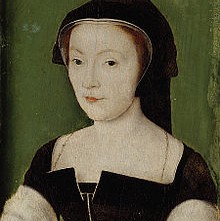
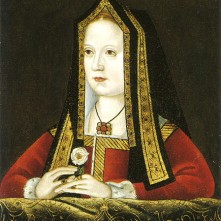

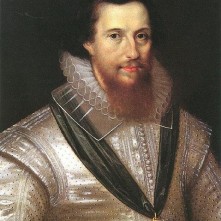
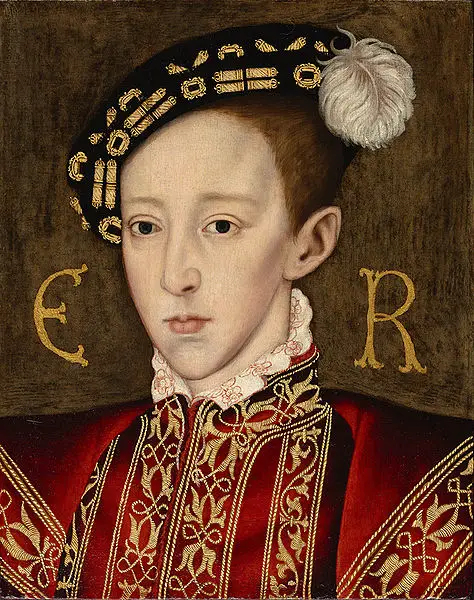
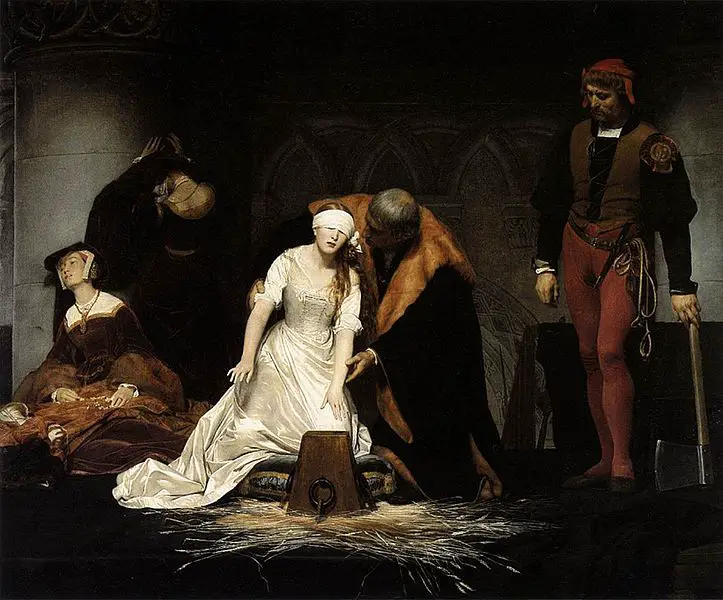
Leave a Reply